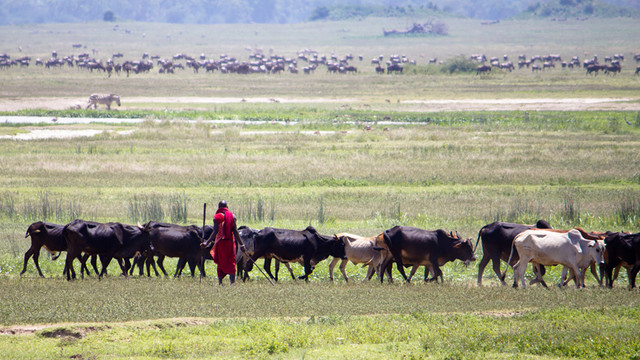Poorest countries spending billions more servicing debts than they receive to tackle climate change
Several nations’ debt repayments even outweigh their total foreign aid receipts.
The world’s most climate-vulnerable countries are being forced to spend billions more paying off their debts than they are receiving in help to beat climate change, according to new analysis by IIED.
In 2021 – the most recent year of data available – the cost of debt repayment for 59 nations was US$33 billion compared to just $20 billion they received in climate finance. Nine of these countries paid out more than they received in total from foreign aid.
Debt burdens have likely increased in the last two years due to global interest rate, food and energy price rises in the wake of COVID-19 and Russia’s invasion of Ukraine.
In 'Drowning in debt', IIED analysed the debt and climate finance situations of nations in the groups of least developed countries (LDCs), such as Senegal, and Small Island Developing States (SIDS) like the Maldives, as defined by the United Nations.
These nations are among those most at risk as global heating creeps closer to the 1.5°C red line and have also contributed least to greenhouse gas emissions.
And about half the funding these countries are getting to tackle climate change comes as loans, rather than grants, piling interest upon interest and pushing them further into debt.
IIED’s analysis comes as world leaders prepare for a finance summit in Paris hosted by Emmanuel Macron and Barbados Prime Minister Mia Mottley, who last year proposed the Bridgetown Initiative for reform of global financial systems.
Laura Kelly, the director of IIED’s Shaping Sustainable Markets research group, said: “Governments facing crippling debt burdens are unable to provide basic services for their most vulnerable people – like healthcare and education – let alone cope with floods, wildfires, droughts and storms being made worse by the climate crisis.
“These climate shocks push low-income countries further into debt because they need to borrow money to pay for recovery, creating a vicious cycle.
“Leaders must use the Paris summit to begin reforming the way climate change is factored into government borrowing, and release this hidden handbrake holding back environmental action.”
In 2021, 26 nations individually paid more to service debts than they got in climate finance, and nine countries’ repayments outweighed even the total amount of foreign aid they received: Angola, Myanmar, the Dominican Republic, Jamaica, the Maldives, Senegal, Belize, Lesotho and the Lao People’s Democratic Republic.
Even for countries where climate finance receipts were higher than their debt repayments, any money that went to repay debt represents funds that could have been used to shore up their climate vulnerabilities.
Notes to editors
- Laura Kelly and Tom Mitchell, IIED’s executive director, will be attending the Paris summit. For more information or to request an interview, contact press@iied.org or +44 7503 643332.
- This analysis is based on figures from the OECD and World Bank.
- Earlier this year, IIED revealed how some countries are using more than one-tenth of their entire national budgets to service debts, and, in more than one case, the proportion is much higher.
- The Bridgetown Initiative seeks to make climate-related borrowing easier and fairer for low-income countries.
- Debt is one of the ‘hidden handbrakes’ that IIED, with support from the Generation Foundation, is planning to spotlight in a new campaign.
For more information or to request an interview, contact Simon Cullen:
+44 7503 643332 or simon.cullen@iied.org



